Savor the irresistible allure of Puerto Rican Empanadas, where golden flaky pastry embraces a savory symphony of seasoned meat fillings. Portable and customizable, these mouthwatering turnovers are the perfect fusion of convenience and culinary artistry.
Jump To
What is an Empanada?
Quick disclaimer; for this post, I will continue to use the term empanada to refer to the deep-fried dough filled with meats and cheeses you can hold in your hand.
However, in Puerto Rico, an Empanada refers to a piece of meat breaded and deep-fried, like Chicken Milanese. What many people call empanadas, we in Puerto Rico call them pastelillos or empanadillas. It has become popular to use the term Empanada since many cuisines worldwide, including Puerto Rico, have them as part of their cuisines.
What is the traditional filling?
For this recipe, I use Picadillo, or ground beef, as a filling since it is the most Puerto Rican empanadas; however, your empanadas are blank canvases for creativity that could be filled with many other options I will cover below. If you want more hand-held or appetizer recipes, try another popular Puerto Rican fave, Pinchos, and for seafood lovers, Ceviche.
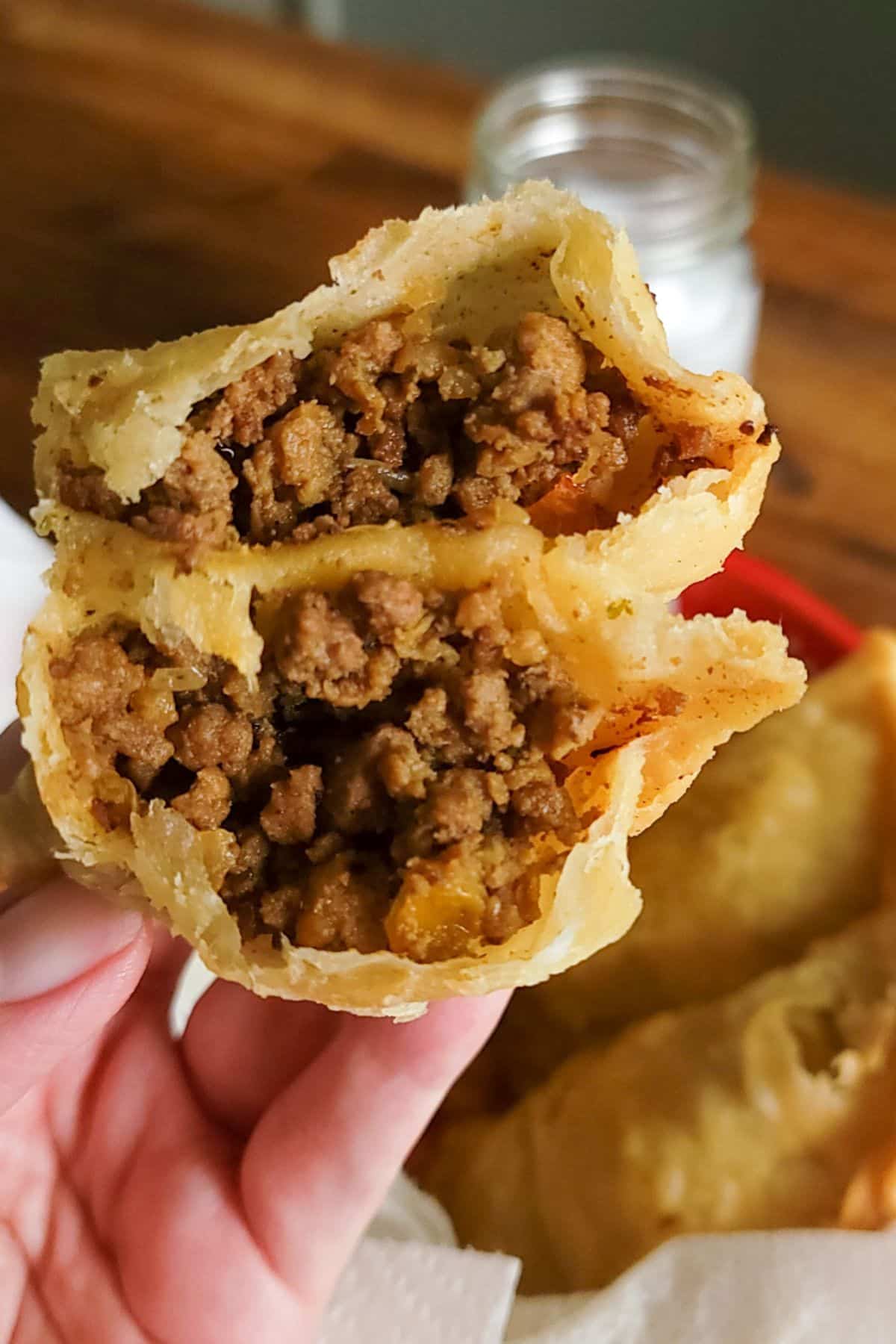
Reasons you will love these empanadas
- Versatility: In addition to the meat, you can add additional ingredients such as cheese, olives, vegetables, or even a touch of sweetness with raisins or dried fruits. This versatility allows for a wide range of flavor combinations.
- Portability and Convenience: Their small size and individual portions make them easy to eat on the go or as finger food at parties. This convenience factor adds to their appeal and popularity.
- Savory Meat Filling: It usually consists of seasoned ground meat, such as beef, pork, chicken, or a combination thereof. The meat is often cooked with onions, garlic, herbs, and spices, which infuse it with rich flavors. Combining the well-seasoned beef and the pastry creates a delicious balance of tastes and textures.
Ingredients Notes
Listed below are the ingredient for the empanada dough. For a complete list of ingredients on the filling, please visit my post on Picadillo.
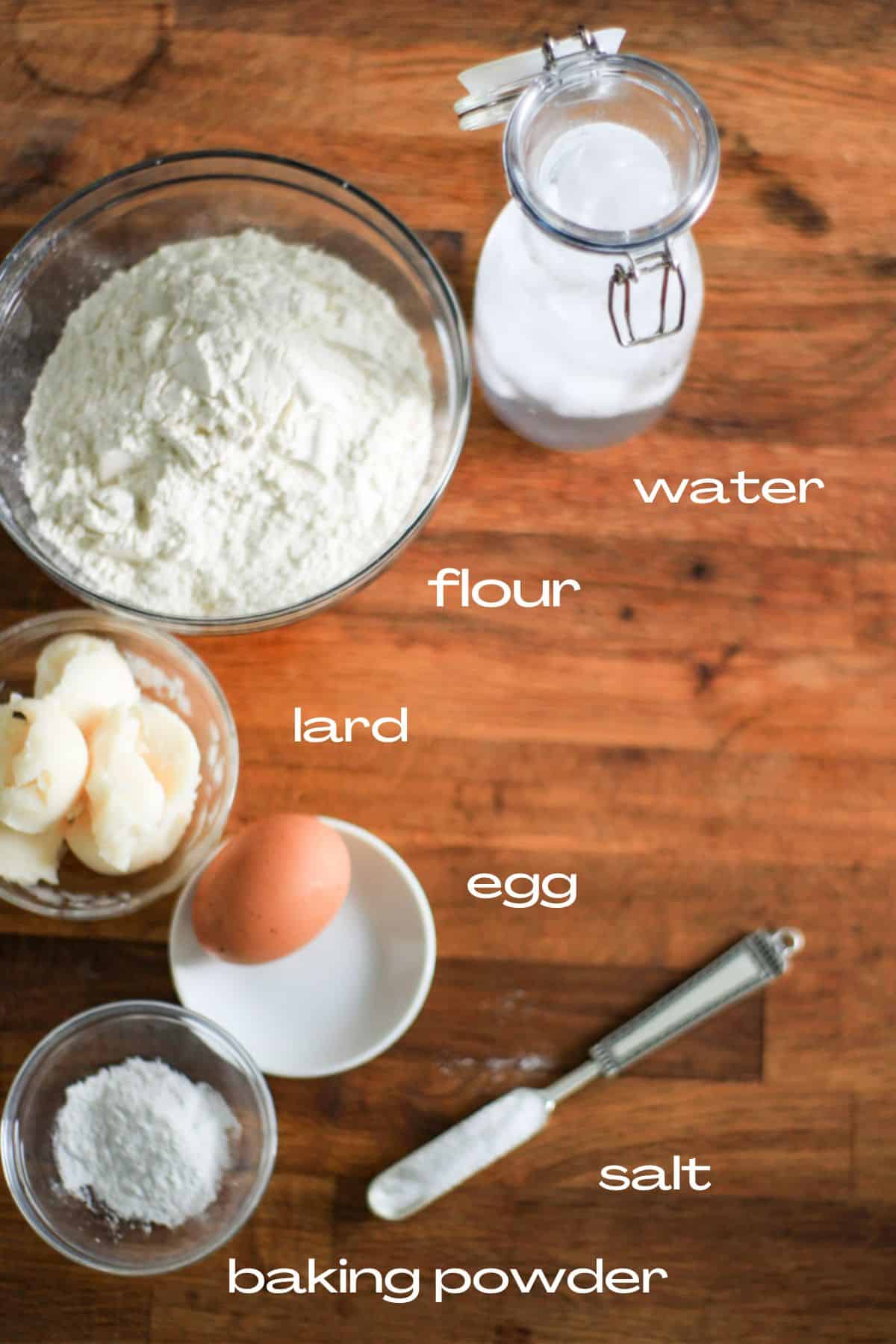
- Flour: you cannot make a pastry without flour, and I used all-purpose flour for this recipe.
- Lard: Lard is vital to this recipe. There are substitutions for it, but lard allows for fat pockets. These pockets will dissolve while cooking, allowing for the airy, flaky, and crispy crust we enjoy while eating empanadas.
- Ice water: Another critical element is ice water. The ice water keeps the fat from prematurely melting during preparation, allowing it to keep its hard state longer.
See my recipe card below for a complete list of the ingredients with measurements.
Variations and Substitutions
- Fats: Consider using butter or oil instead of lard. Duck fat would work as well, especially for savory empanadas.
- Cheeses: Cheddar, gouda, swiss for savory treats. Mozzarella and pizza sauce will make for a great pizza version of this snack.
- Meats: Any meat or combination of meats will work well in empanadas. Picadillo and Chorizo, shredded chicken, ropa vieja, octopus, and even my shrimp and scallop stew would make a great filling.
How to make Puerto Rican empanadas de carne
Here are the step-by-step instructions to make the dough for empanadas. Please visit my post for Picadillo for complete instructions and ingredients to make the filling. Picadillo can be made the day before or while you wait for the dough to rest. Make sure that it is completely cool before assembly.

- Sift the Flour, salt, and baking powder.
- Cut the fat into the flour mixture with a knife, whip, pastry blender, or a food processor with a dough hook. You want it to have the consistency of peas.
- Add small increments of water until the mixture comes together into one mass.
- Knead the mixture until it forms a ball—place in a bowl and cover. Let rest at room temperature for 30 minutes.
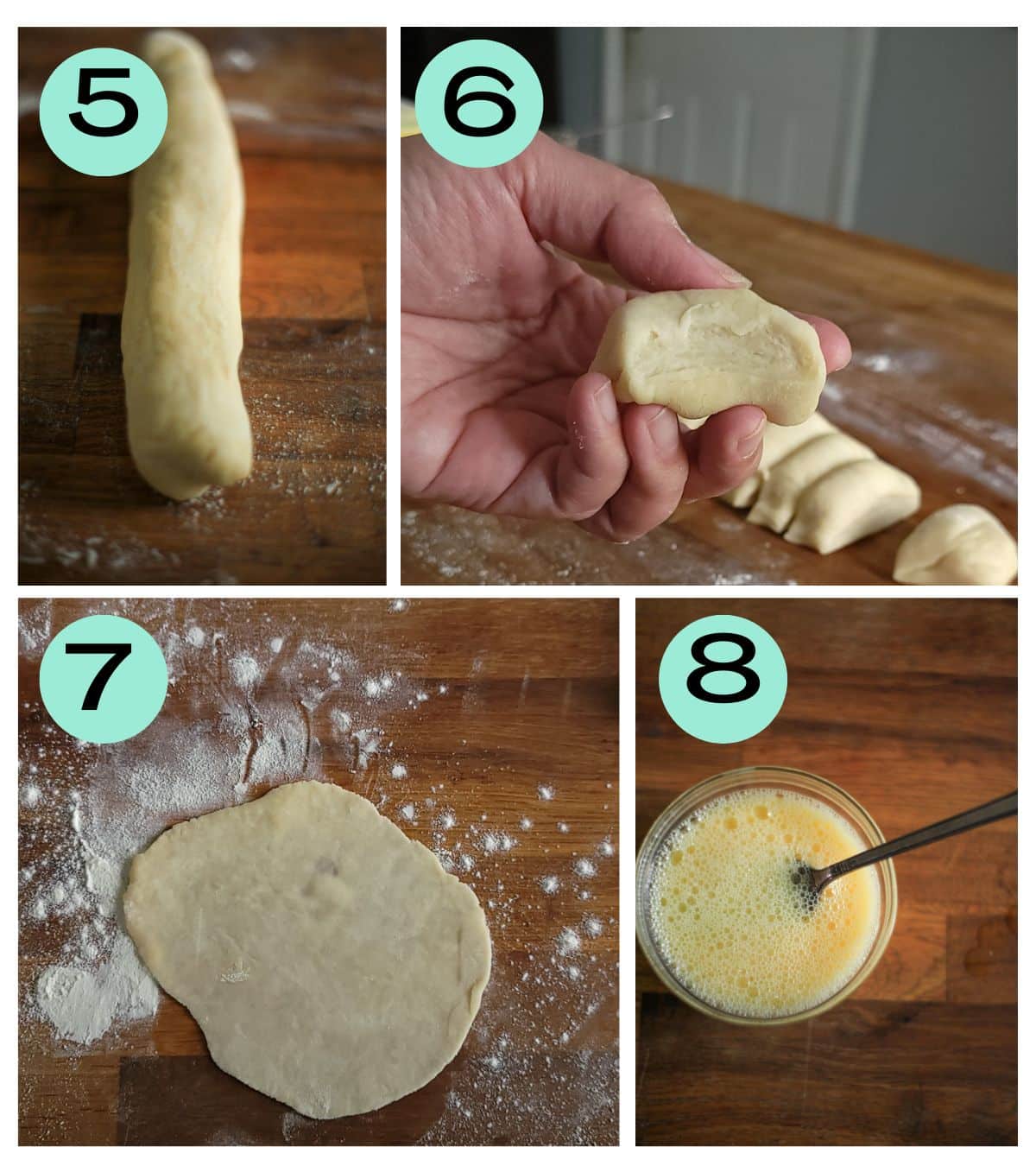
- Dust the table or work surface with flour. Lightly cover the dough with flour and begin to roll dough into a log, about 2 inches in diameter.
- Cut the roll into 1-inch pieces. If the ends of the roll are tapered, you may cut those larger than 1 inch.
- Roll the dough pieces into small discs using a rolling pin or tortilla maker. Avoid making them too thin, or they will rip during assembly. As you make your disks, layer them with parchment paper and place them in a baking pan. Once you have finished making all the discs, place the discs in the refrigerator for a few minutes to keep the fat from melting prematurely.
- While the disc chill for a bit, make an egg wash of one part egg and one part water.
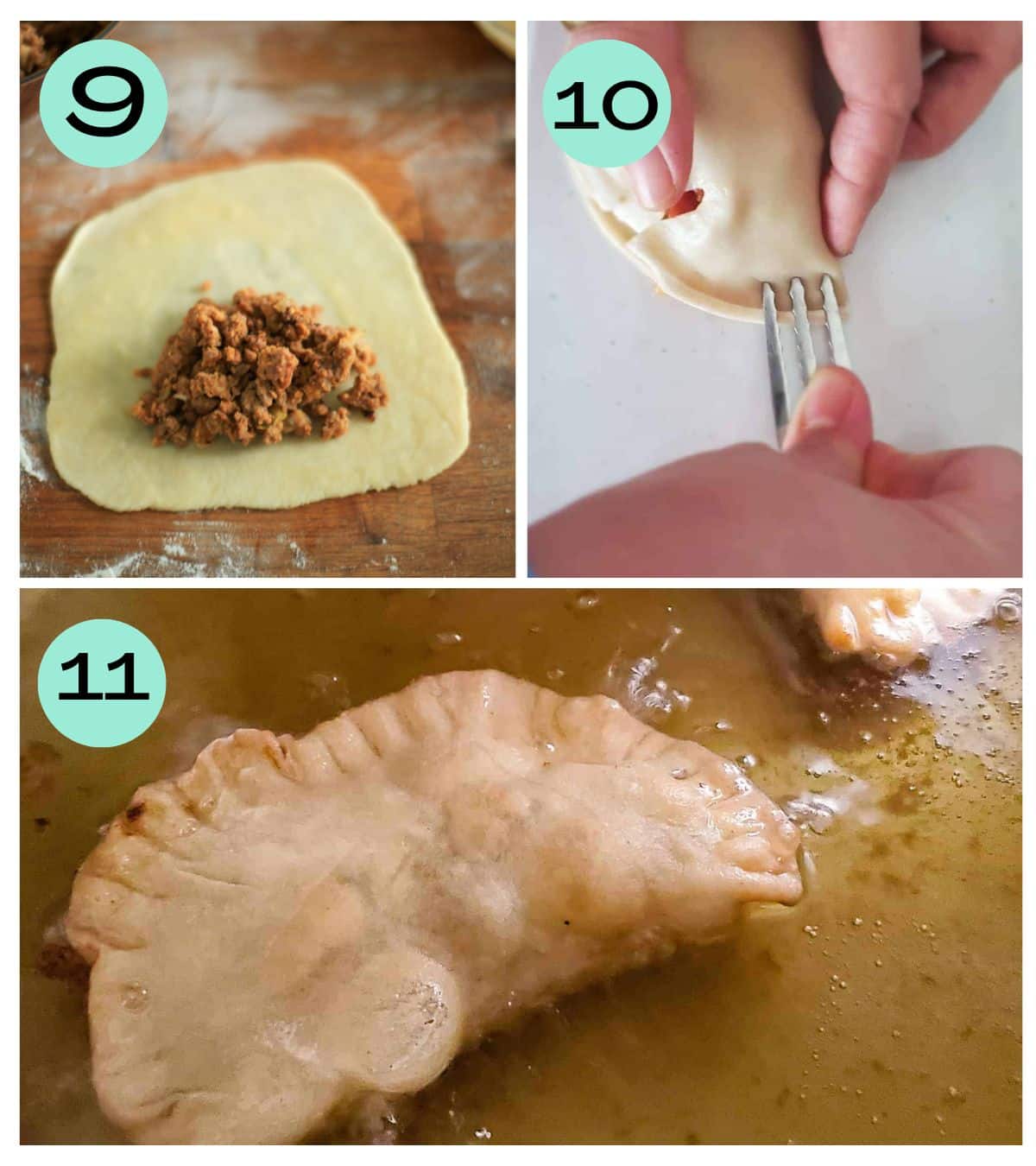
- Place a portion of meat filling on the bottom half of the disc. Leave a margin at the bottom half of the empanada for the top half to make the joint. Using your fingers or a brush, brush egg wash on the edge of the disc.
- Fold empanada and crimp. You may use an empanada press or a fork to crimp your empanadas. When using a fork, move the fork tines along the edge of the pastelillos and equally space.
- Deep fry or bake your empanadas to a golden brown. For Deep frying: Use a cooking alarm to maintain the temperature of the oil. The cooking alarm is handy because I have a small kitchen and no room for a deep fryer. Bring the oil to a temperature of 350℉. Once the temperature is reached, add a few empanadas to the oil one at a time. Be careful not to crowd the empanadas in the oil. For Baking the pastelillos, Preheat the oven to 350℉. Line a baking sheet with parchment paper and arrange the pastelillos 1 inch apart in all directions. Bake for 20 minutes or until golden brown.
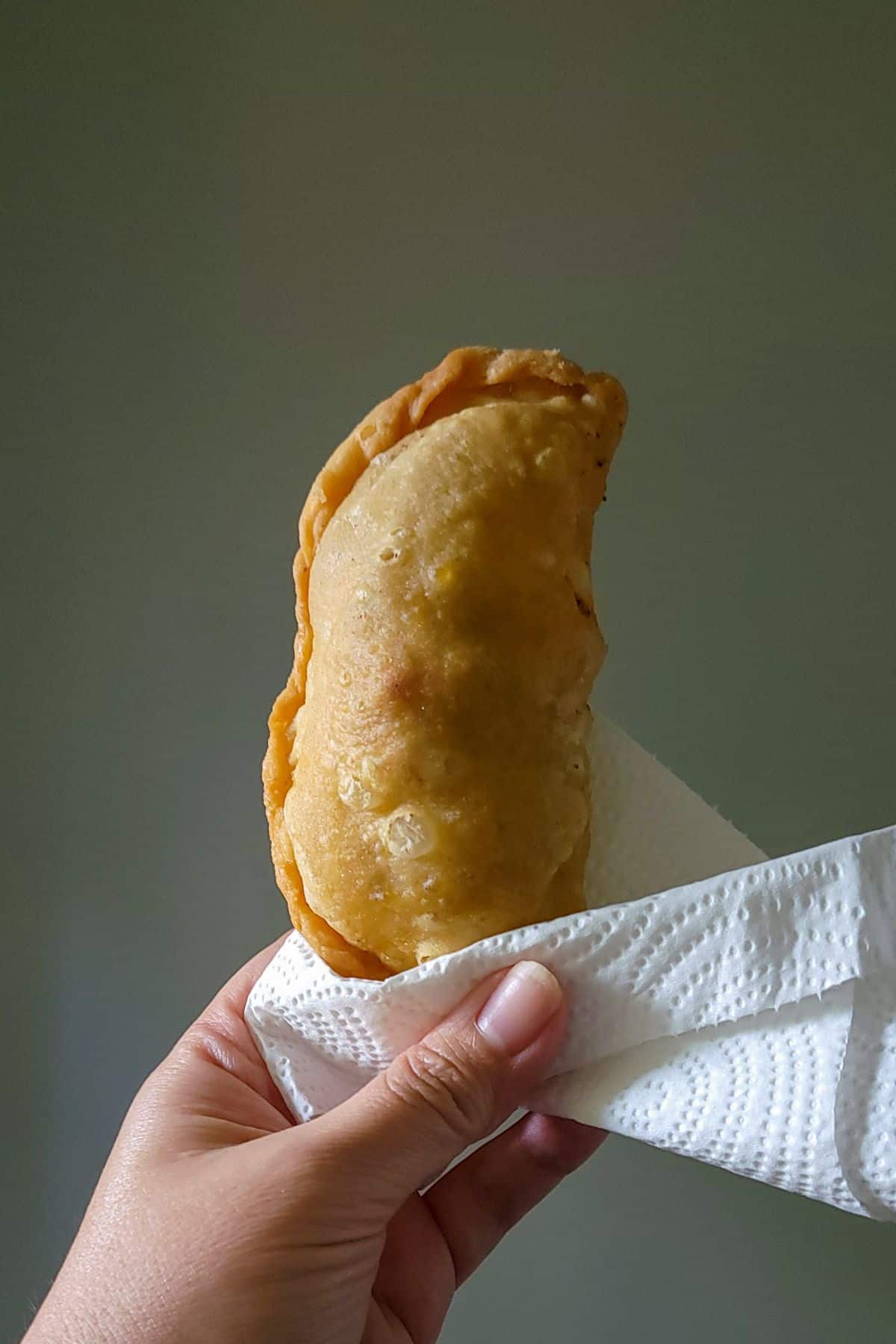
Expert Tips
- Immersion Thermometer: If you have a small kitchen as I do, you might not have room for the plethora of gadgets and equipment available in the market. An immersion thermometer will help you to deep-fry any item in a sauce or frying pan. It will also help you keep the temperature in roasts in the oven.
- When frying in a saucepan or frying pan. Do not fill the oil to the top. The oil will rise and bubble once you add the item you are frying. As the temperature of the oil levels off, the oil will return to its original level. Overflowing hot oil could cause fire or bodily injuries if not handled appropriately.
- Make your discs or assemble empanadas the day before, if possible; layer them with parchment paper and allow them to rest covered in an airtight bag in the refrigerator. For discs, let them come to room temperature slightly before assembly. For already assembled pastelillos, they could be fried or baked while cold.
- Frozen discs can last up to 3 months in the freezer in an airtight bag—layer parchment paper between discs to store and for ease of separation.
Recipe FAQs
The recipe above is for a basic dough. If you do not want to make your dough, you might want to explore biscuit dough, which makes for a more bread-like empanada. These could be baked in a muffin tin for a stuffed biscuit. Phyllo dough is flaky and would work as well as pizza dough from your local pizzeria or grocery store. You can roll the dough and cut it down into the desired shape. After all, Calzones are the biggest empanadas I know.
Considering that almost all Latin American countries or countries colonized by Spain have a version of Empanadas in their cuisines, I would say Empanadas come from Spain.
To empanar means to bread. Empanada means breaded. In Puerto Rico empanadillas and pastelillos are what many people call empanadas.
Hands down, homemade dough is not difficult to make. However, the store-bought dough is quite convenient. Just follow the instructions in the packaging for the best results. some problem with store-bought dough is broken discs and freezer burn. However, they are convenient and easy to use.
MayoKetchup if you are from Puerto Rico. A combination of Mayonnaise and Ketchup that is also sold bottled on the island.
Chimichurri Sauce is like pesto, made with parsley, garlic, chilis, and spices with oil and vinegar.
Aji-li-mojili is a garlic-based dipping sauce used with pork in Puerto Rico. I love garlic so much that I would put it on anything.
Some countries will add potatoes, hard-boiled eggs, and raisins to their picadillo when filling empanadas. I have tasted empanadas with spices like chilis, cumin, paprika, and sometimes cinnamon. Again, it depends on the region and culture. Please feel free to add any of these ingredients to your empanadas.
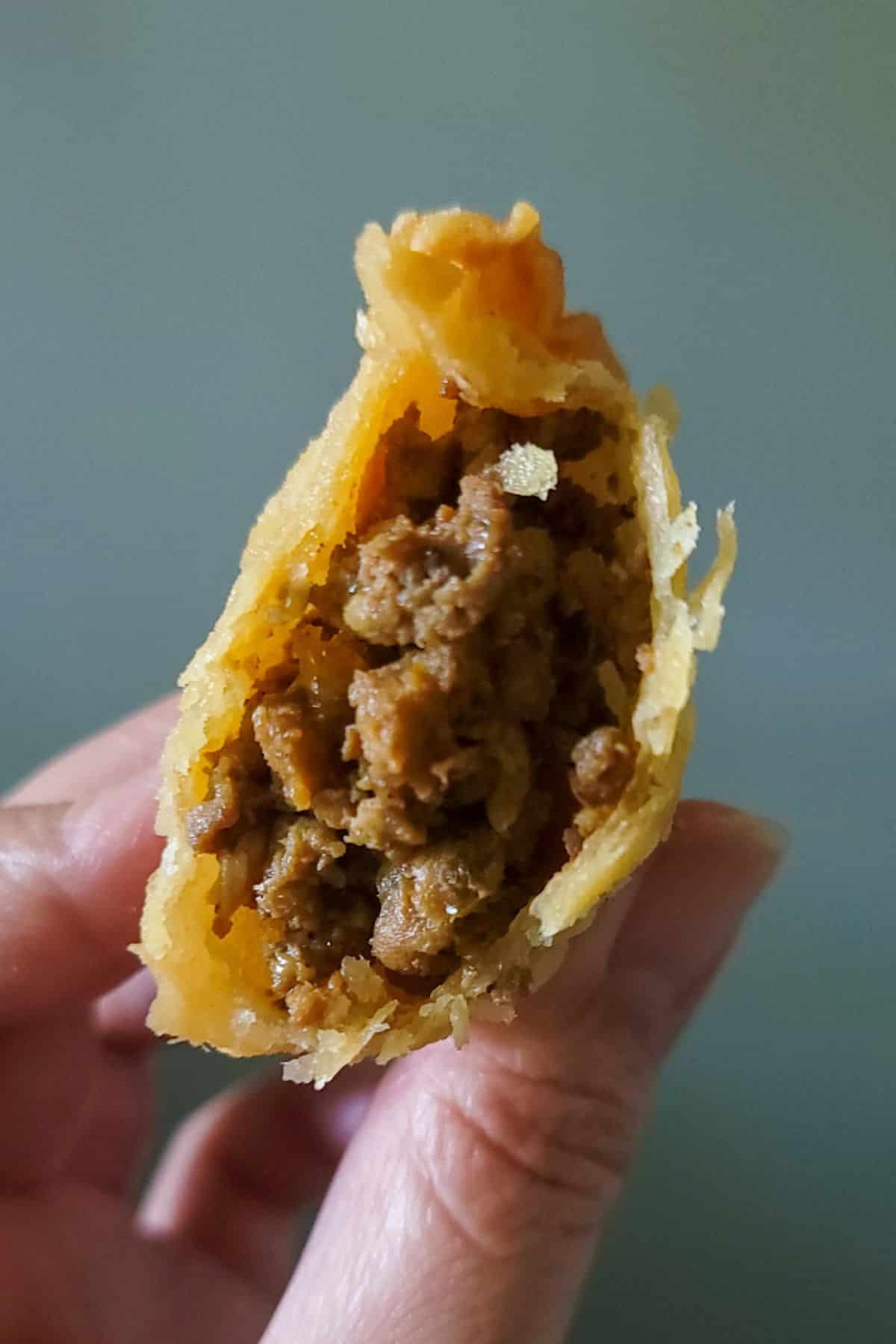
More Puerto Rican Inspirations
I want to know what you think! Did you make this recipe? Please leave a review and a rating below. You can also find me on Instagram! Please sign up for my email list to receive my newest and latest recipes.
📖 Recipe
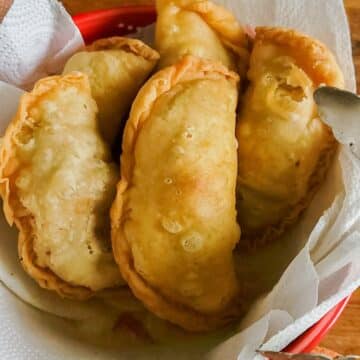
Puerto Rican Empanadas
Ingredients
- 2 cups flour
- 1 teaspoon of table salt
- 2 teaspoon of baking powder
- 6 tablespoon of vegetable shortening chilled
- ½ cup of chilled water
- 1 egg for egg wash
- 1 tablespoon water
To Fry Empanadas:
- 1 art Peanut Oil
Instructions
- Take flour, salt, baking powder sifted into a bowl or the bowl of the food processor.2 cups flour, 1 teaspoon of table salt, 2 teaspoon of baking powder
- Add chilled vegetable shortening. Start the processor or cut shortening into the flour while adding chilled water.6 tablespoon of vegetable shortening, ½ cup of chilled water
- Once the dough begins to pull apart from the bowl, remove the dough and place it on a floured surface to knead.
- Knead the dough for about a minute and then make it into a ball. If not using the same day, place the dough in a zip bag and into the refrigerator.
- Place the ball into a bowl and cover it with a kitchen towel. Let it rest for 30 minutes at room temperature.
- Roll the dough into a 2-inch log and then slice the dough into 1-inch discs.
- With a floured rolling pin, flatten the discs until they are thin but not see-through thin. Roughly, stretch it to a six-inch disc.
- Make egg wash. Brush egg wash on the edges of the disc.1 egg, 1 tablespoon water
- Place filler at the bottom half of the disc.
- Bring the top edge to meet the bottom edge. Creating a half-circle.
- Seal empanada by pressing a fork onto the edges, about ¼-inch deep.
- Make sure the oil is at 350ºF.1 art Peanut Oil
- Dropping 2 to 3 empanadas at a time, begin to fry them. You are looking for a nice golden color on each side.
- Flip the empanadas to cook the other side.
- Once empanadas are nice and golden, remove them from oil and place them on a plate with paper towels to absorb excess oil.
Notes
- Immersion Thermometer: If you have a small kitchen like I do, you might not have room for the plethora of gadgets available in the market. An immersion thermometer will help you to deep-fry any item in a sauce or frying pan. It will also help you keep the temperature in roasts in the oven.
- When frying in a saucepan or frying pan. Do not fill the oil to the top. The oil will rise and bubble once you add the item you are frying. As the temperature of the oil levels off, the oil will return to its original level. Overflowing hot oil could cause fire or bodily injuries if not handled appropriately.
- Make your discs or assemble empanadas the day before, if possible; layer them with parchment paper and allow them to rest covered in an airtight bag in the refrigerator. For discs, let them come to room temperature before assembly. For already assembled pastelillos, they could be fried or baked while cold.
- Frozen discs can last up to 3 months in the freezer in an airtight bag—layer parchment paper between discs to store and for ease of separation.

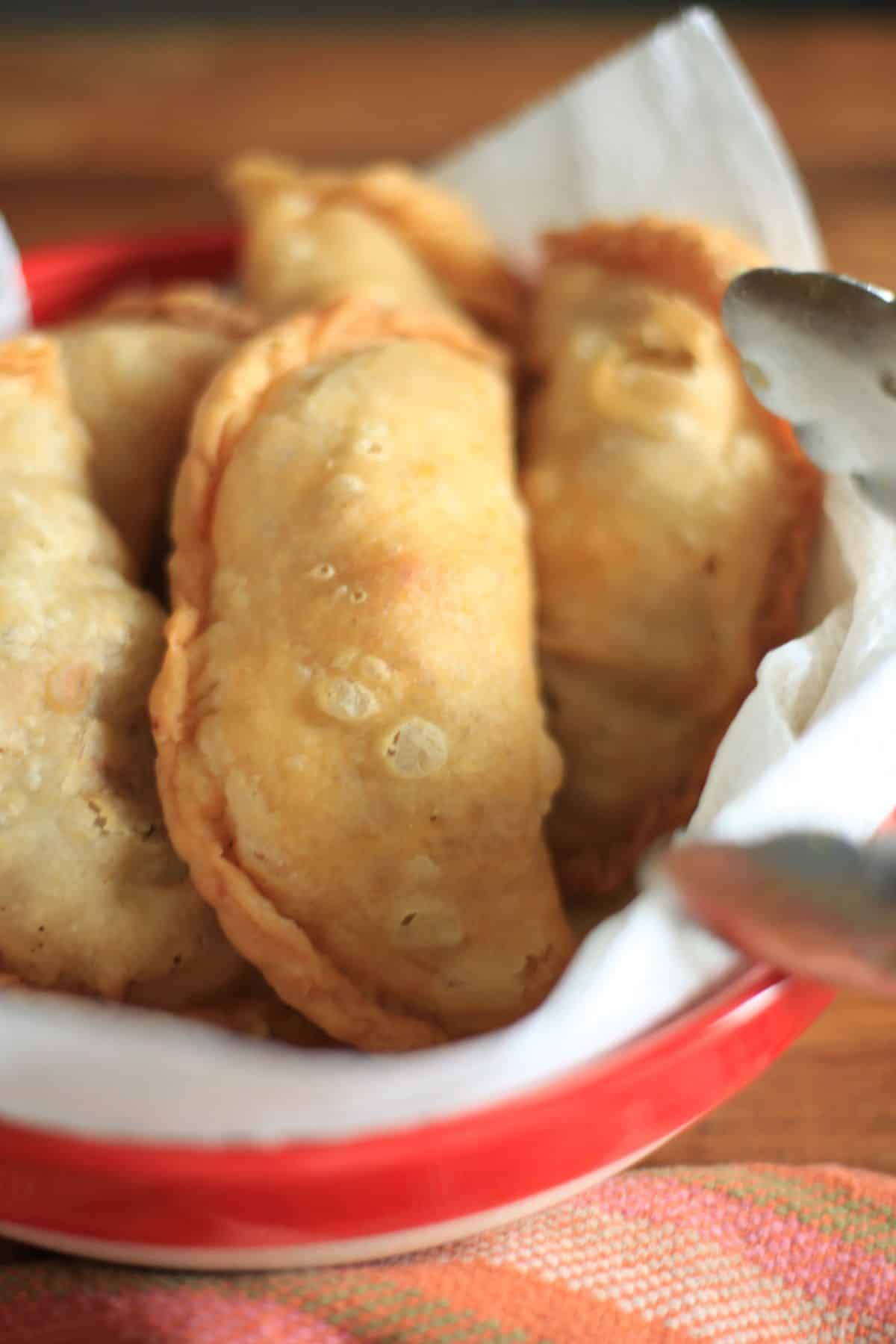
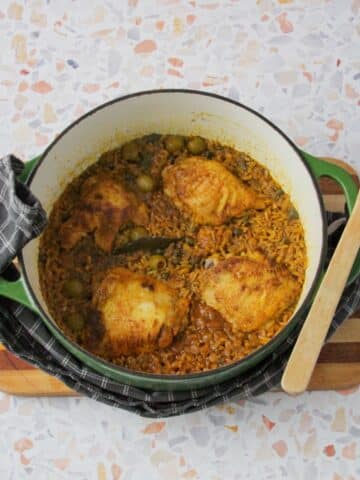
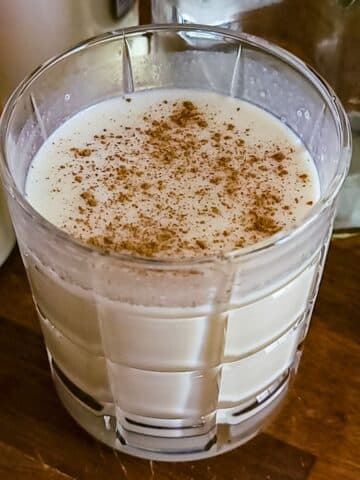
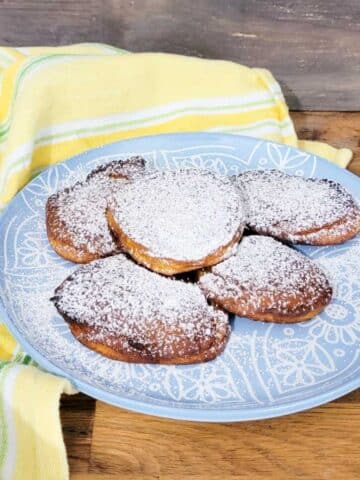
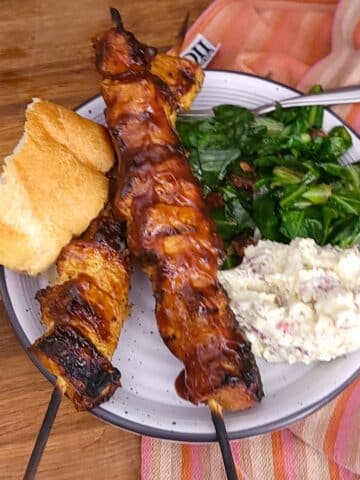
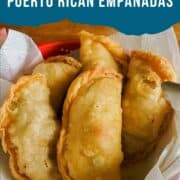
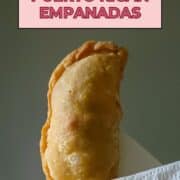

Comments
No Comments